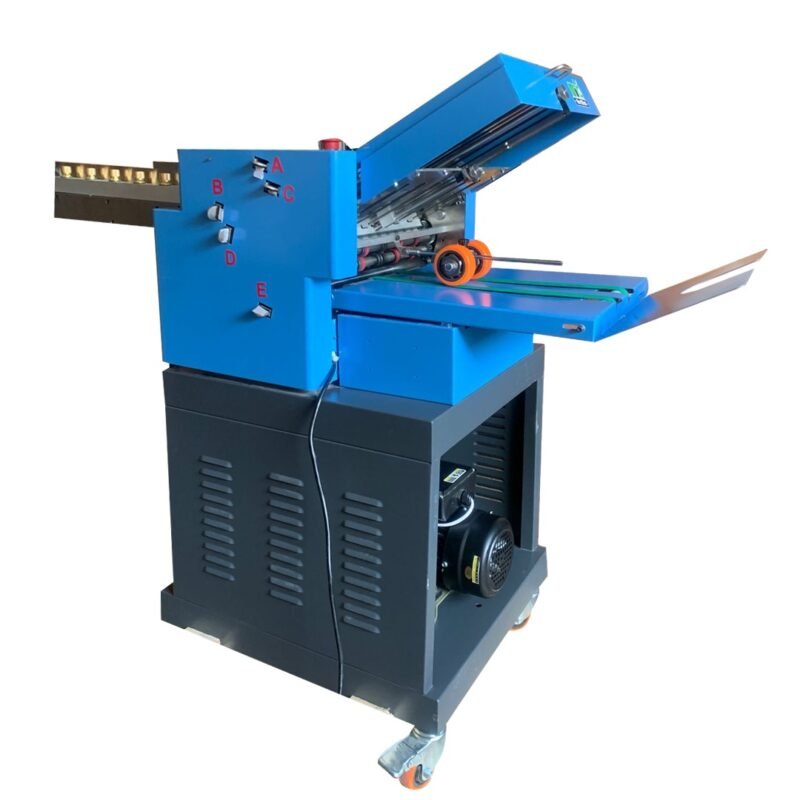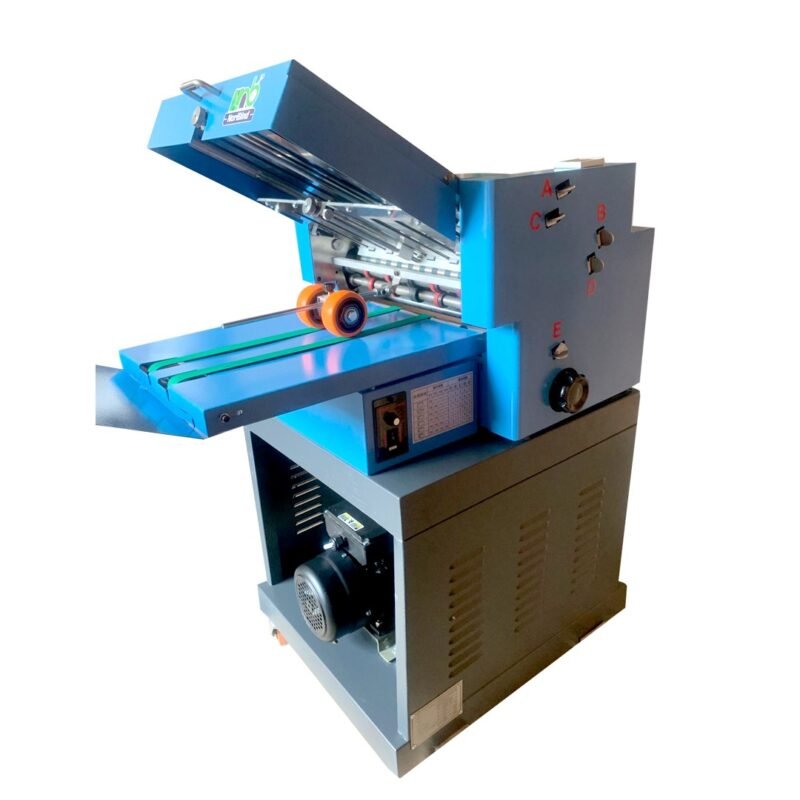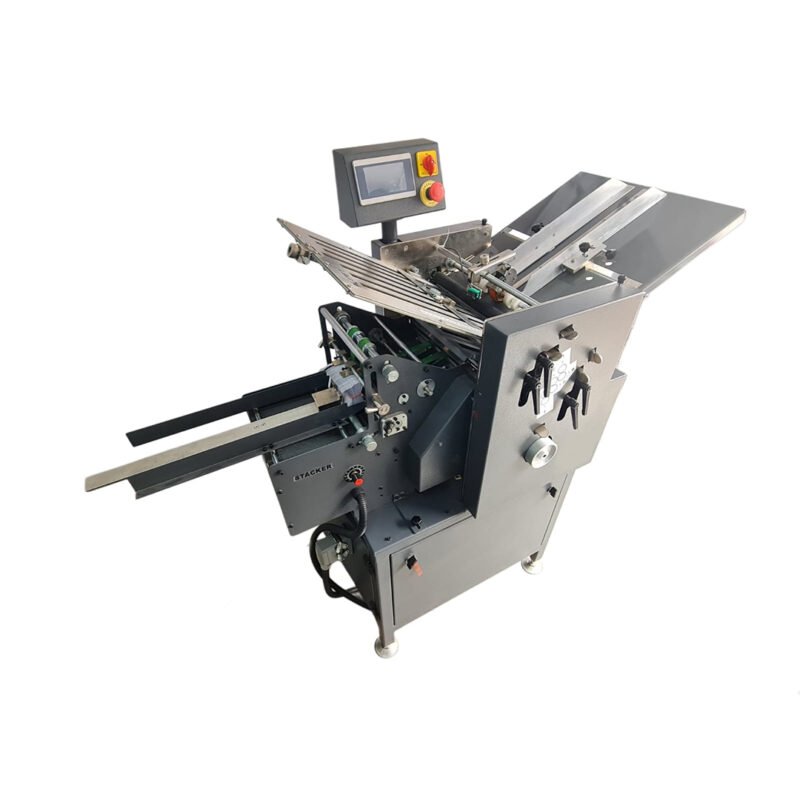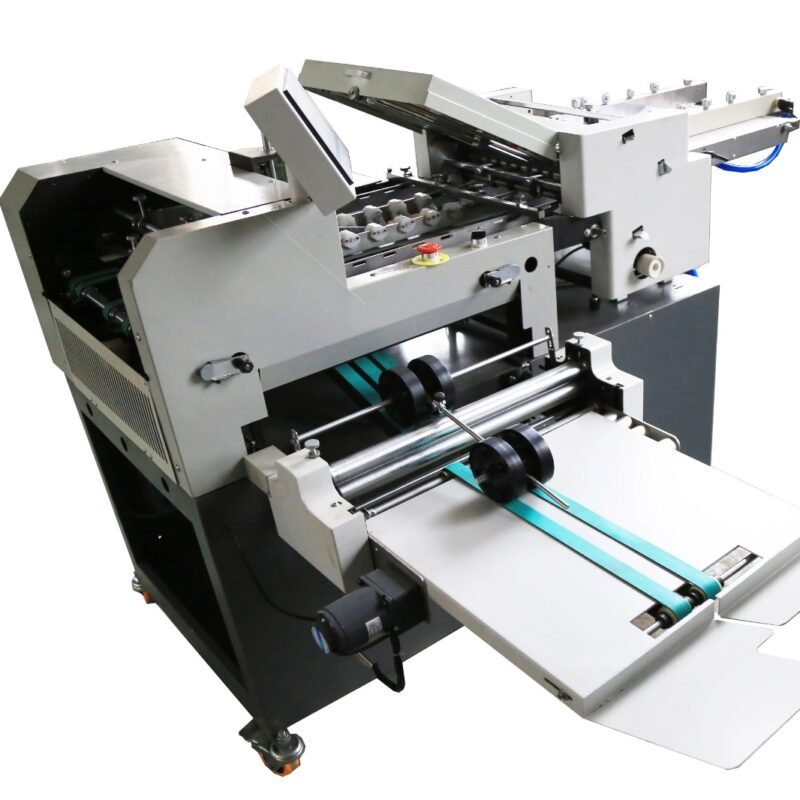Namibind Paper folding machines are indispensable tools for businesses and print shops aiming for efficient and precise document handling, eliminating the laborious task of manual folding. These machines come in various configurations to suit different needs, starting with the 2-fold model, perfect for basic letter folds and invoices in moderate-volume offices. For more complex folds like Z-folds and accordion folds needed in marketing materials, the 4-fold machine excels. The 6-fold variant tackles intricate folds such as gatefolds, common in commercial printing. For high-volume environments, autofeeding machines offer continuous, automated operation. These machines accommodate diverse paper sizes and thicknesses, ensuring smooth, jam-free performance. Utilizing paper folding machines yields numerous benefits, including significant time and labour cost savings, consistent and accurate folds for professional documents, versatility in handling multiple fold types, and improved efficiency for bulk printing and mailing. Whether for small offices or large-scale printing operations, investing in the right paper folding machine streamlines workflows and enhances overall productivity.
Paper Folding Machine
Showing all 5 results
-
Paper Folding Machine
Namibind PFM 380A Vacuum Feeder Suction Paper Folding Machine | 4 Parallal Folding | 23,000 A4/hr Speed With Suction Feeder System Ideal For Pharmaceutical, Packaging & Marketing Companies
 Paper Folding Machine
Paper Folding MachineNamibind PFM 380A Vacuum Feeder Suction Paper Folding Machine | 4 Parallal Folding | 23,000 A4/hr Speed With Suction Feeder System Ideal For Pharmaceutical, Packaging & Marketing Companies
- Indentation and rice noodle wheel
- Rear stop gauge adjustment offset
- Batch counting, arbitrary setting
- New adjustable speed receiving table
- High-speed, super quiet, wear-resistant helical gear
 SKU: n/a
SKU: n/a -
Paper Folding Machine
Namibind PFM 380B Vacuum Feeder Suction Paper Folding Machine | 2 Parallel Fold | 29,000 A4/hr Speed With Suction Feeder System Ideal For Pharmaceutical, Packaging & Marketing Companies








